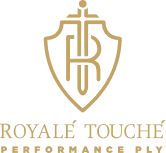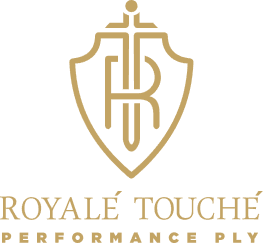
Different Types of Block Board and Uses in Furniture Production

October 29, 2025
Choosing the right form of material is important in furniture production as it needs to be durable, strong, and look good. One material that is reliable and broadly used in the furniture industry is blockboard. Blockboard is a stable and flexible material making it perfect for the furniture industry and interior designers. It is essential to know the different types of blockboard and how each type of blockboard is best suited, all of which will produce quality outcomes. This article aims to discuss and address the different types of blockboard and how each type of board should be applied in furniture manufacturing.
What is a Blockboard?
Blockboard is an engineered wood product that is constructed by gluing strips of solid wood together (called a core) and laminated with front and back veneers. The blockboard is designed to be a lightweight and sturdy panel and is not likely to warp or bend. Because of this, blockboards are commonly used to build cabinets, doors, tables, wardrobes, and other interior furniture. Blockboard is often a common material used for making furniture because it is durable, flexible, and inexpensive.
Why is it Important to Know About Different Types of Blockboard?
Not all block boards are the same. The types of blockboard could vary in core materials, adhesive materials, and type of finish, along with the right Blockboard Thickness, which all relate to how strong, water-resistant, and what furniture applications are best suited to them. Selecting a suitable block board can affect the durability, appearance, and ease of installation. Understanding the block board types ensures the furniture maker produces a functional and attractive product in the end.
Blockboard Types Used in Furniture Manufacturing
Boiling Waterproof Blockboard
Boiling Waterproof Blockboard has been treated to resist humidity, moisture, and water seepage, that is, it has been bonded with waterproof resins in the core so it will not swell or warp due to temperature and wetness making it ideal for furniture with wet/humid environments.
Furniture Applications:
-
Kitchen cabinets and countertops
-
Bathroom vanities and storage below sinks
-
Outdoor units or semi-covered seating and tables
-
Modular wardrobes in coastal or humid environments
Why it is a good choice:
Great moisture resistance, and dimensional stability for long-lasting durability. The ideal choice for tropical or coastal weather with high humidity.
Calibrated Hardwood Blockboard
Calibrated Hardwood Blockboard is manufactured to precise standard thickness in an already smooth surface which has been manufactured from strips of dense hardwood such as oak or teak, which will offer superior strength and load-bearing capabilities. Type is frequently selected by customers wanting furniture that would be durable and visually appealing.
Furniture Applications:
-
Full sized wardrobes/dressers
-
Luxury sliding or walk-in wardrobes
-
Conference table or office table and same table designs
-
Decorative wall panels or partition structures
Why it is a good choice:
Precise calibration means it will assemble perfectly and is good for modular or designer furniture. For sure it will have lasting structural strength with elegant finish.
Pine Blockboard
Pine Blockboard is a lightweight option, using pure pine wood strips between veneers. As a softwood, it is easy to handle and cut, and can be installed without extensive support and is very appropriate for furniture which does not have an extensive load to bear. While it is light, it offers some stability for general use.
Furniture Applications:
-
Compact wardrobes/cabinets
-
Folding or portable furniture
-
Lightweight decorative shelving units
-
Children’s furniture, small modular spaces
Why it is a good choice?
Pine blockboard is cost-effective, easy to handle, and visually appealing - to really offer a great range of affordability and starter, low-cost options for your own furniture goes an extra step as really it is a great substrate product for a laminate or veneer furniture design.
How to Select the Appropriate Block Board
Selecting the appropriate block board depends on:
Intended use of the furniture
Use hardwood or marine for heavy-duty furniture.
Moisture exposure
Use only moisture-resistant or marine for kitchens or bathrooms.
Aesthetic intentions
Use laminated or veneered block boards for designer furniture.
Budget
Softwood block boards are economical, while hardwood and marine are premium materials.
Understanding these factors helps furniture makers select the right block board type to create durable, safe, and aesthetically pleasing furniture.
| Feature | Boiling Waterproof Blockboard | Calibrated Hardwood Blockboard | Pine Blockboard |
|---|---|---|---|
| Moisture Resistance | Excellent | Moderate | Low |
| Strength / Load Bearing | High | Very High | Medium |
| Weight | Medium | Heavy | Light |
| Surface Finish | Smooth & Durable | Precision-Calibrated | Veneer-Friendly |
| Ideal Applications | Kitchens, Bathrooms, Outdoor | Premium Wardrobes, Office Furniture | Compact & Lightweight Furniture |
Conclusion
The three major blockboard options (Boiling Waterproof Blockboard, Calibrated Hardwood Blockboard, and Pine Blockboard) have distinct advantages that suit specific furniture design applications and different blockboard uses in interior and commercial projects. For example, Boiling Waterproof Blockboard is appropriate for areas with a high potential for moisture, Calibrated Hardwood Blockboard is the best option if strength and a high-quality appearance are paramount, and Pine Blockboard is best for smaller pieces of compact and decorative furniture as a lightweight and economical option. With a clear understanding of the characteristics and blockboard uses, designers and manufacturers can make informed decisions when creating the final furniture and ensure that the end product is visually appealing, durable, and functional. When used correctly, the right material selection can significantly improve the overall quality of furniture by meeting both aesthetic and practical requirements.
Related Blogs
Related Blogs
The Process of Manufacturing Blockboard
Major Differences Between Blockboard and MDF
Pine Block Board: A Versatile Material for Interior Design
What are the Major Differences between Block board and Plywood
Understanding the Differences Between Pine Blockboard and Other Blockboards
Difference Between Calibrated Hardwood Blockboard and Regular Blockboard
